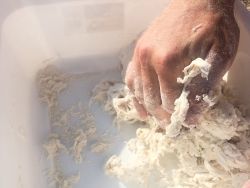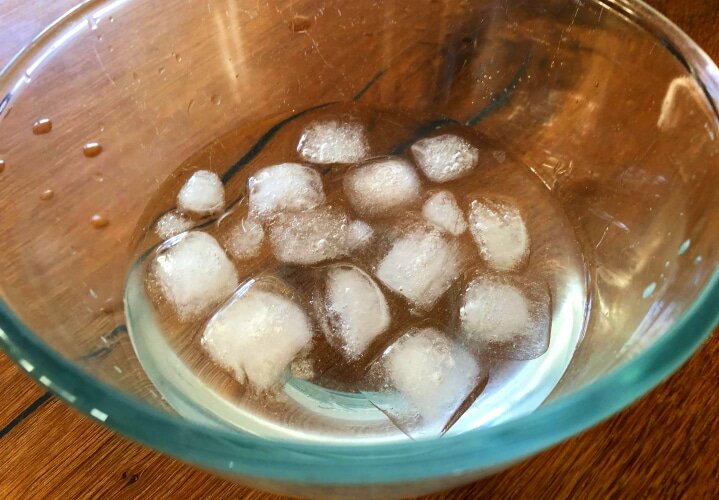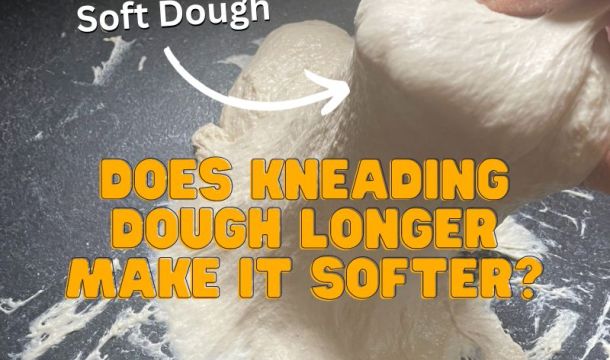
How to Increase the Amount of Water in Bread

Are you looking for ways to include more water in your dough? Perhaps you want to have the benefits of higher hydration dough, but don’t want a sticky mess? Is it possible to raise the water content of a bread recipe without it becoming overly sticky or hard to handle? Here is how to increase dough hydration without simply reaching for the flour bag. Here’s the short answer:
The best way to increase the amount of water used in bread dough is to select a high-quality bread flour. The dough should be well matured with a preferment, long bulk fermentation or autolyse. Using these techniques will prevent your dough from turning out a sticky mess.
But why would we want to do this, and how do these methods work? Let’s explore…
Why should I use more water in a recipe?
There are a few reasons for increasing the hydration of a dough. Let’s take a look at them:
More moisture in the crumb
A wetter consistency makes it easier for the gluten strands to stretch. This is what makes bread with an open crumb and softer texture! As long as you have the patience to knead well and allow it to ferment, lovely large bubbles will form.
A crisper crust
If shaped well, dough with stretchy gluten forms a strong protecting outer perimeter. It’s this outer perimeter that holds the dough together when it rises in the oven. If the gluten can stretch easily, expect to see a more explosive oven spring and a nice crispy crust.
Increased profit margin
Water is the cheapest ingredient in bread. Therefore, it makes sense that commercial bakeries consider increasing the ratio of water in their recipes to make more profit. In high output bakeries, an extra 1% of water in a recipe could result in thousands saved.
It sounds good!
If you see your favourite Instagrammer making fantastic sourdough bread at 80-100% hydration. I understand if you want to follow suit. Even if you’re happy with your bread it’s an interesting experiment to try high hydration doughs.
Techniques to increase the hydration of a recipe without it becoming sticky
A lot of bakers get stuck when increasing the amount of water in the recipe. It’s much harder to work with high hydration doughs, having said that it’s a definite ego boost when its mastered! The art of increasing the amount of water in a recipe is tough, but I reckon you can do it! Here are a few ways that increase the flour’s ability to retain water:
#1 Change the flour
If you’ve followed a high-hydration recipe before and ended up with a sticky mess and wondered why when you’ve followed the recipe to a tee? The solution can be as simple as the type of flour. See, all flours are different and will absorb varying amounts of water. In general, high protein bread flours and wholegrain flours absorb the most water. Yet things like the ash content, quality of the protein, grain quality, existing moisture in the flour, humidity, temperature and how the flour has been kept all play a role.
It’s hard to tell how a flour will behave without using it, but a handy thing to know is that protein absorbs the majority of the water. Switching flour to one with a higher protein will soak up more water and mean you can increase the hydration, without getting as wet and sticky.
#2 Keep the water cool

Warm doughs get sticky very easily. The yeast gets active and starts producing gas and water whilst kneading. Many home bakers will end kneading early as the dough is too hard to work with! Make temperature readings of the flour and the room using a thermometer and use a desired dough temperature formula to calculate the temperature of the water. Use cold water to drop the temperature of the water when in a warm environment. When it’s especially hot, use ice to cool the water further.
#3 How prefermented flour can help
Flour that’s soaked in water with yeast will ferment. Leave it overnight and add it to a fresh batch of dough, and it will distribute mature material through the dough. Adding a preferment enriches the gluten to help it retain more water. Doughs containing prefermented flour hold around 3% more water.
Prepare the biga, poolish or pâte fermentée (or a sourdough levain) in advance. Preferment 10-50% of the total weight of flour used in the recipe.
#4 Perfect bulk fermentation

As dough matures and the gluten softens, its ability to absorb more water increases. Dough that undergoes a long bulk fermentation will take on more water to prevent it from drying out. This has benefits to the stretch of the gluten and the softness of the crumb.
If you make a dough that turns out too wet, put it in the fridge overnight to slow down fermentation activity and encourage the flour to soak up the excess water.
#5 Try an autolyse
An autolyse of the flour gives time for the water to be absorbed and hydrate the gluten. This allows a higher hydration ratio to be used without an extended bulk fermentation time.
#6 Use the bassinage technique
Another great solution to adding more water is using the bassinage method. This involves retaining 5-10% of the total water until the dough has almost finished mixing.
The idea here is the gluten is developed until it is long and stretchy in the mixing bowl, and then the second water inclusion is added. The dough is then mixed for a couple more minutes to trap the water in the structure. Instead of when mixing, the bassinage can be added midway through bulk fermentation.
The bassinage method is a great way to push hydration further and helps to create an irregular crumb. I use it in my authentic baguette recipe if you’d like to see how it works.

Ending thoughts on increasing the water in a dough
After reading this, I hope you’ve found the answer to your question. As you can see there are many ways to achieve the goal of increasing hydration. There’s not one fix so expect it to take a few attempts until you’re happy with the bread. But that’s the fun of bread baking! If you want any more baking help, try the how to fix wet doughs article, otherwise, just ask in the comments and I will be happy to help!
If you’ve enjoyed this article and wish to treat me to a coffee, you can by following the link below – Thanks x

Hi, I’m Gareth Busby, a baking coach, head baker and bread-baking fanatic! My aim is to use science, techniques and 15 years of baking experience to help you become a better baker.
Table of Contents
- Why should I use more water in a recipe?
- Techniques to increase the hydration of a recipe without it becoming sticky
- #1 Change the flour
- #2 Keep the water cool
- #3 How prefermented flour can help
- #4 Perfect bulk fermentation
- #5 Try an autolyse
- #6 Use the bassinage technique
- Ending thoughts on increasing the water in a dough
Related Recipes
Related Articles
Keep up to date with the latest Articles, Recipes & Bread Baking info by joining my mailing list
Join The Weekly Bread Baker's Newsletter!
Latest Articles
Baking Categories
Disclaimer
Address
8 Woodland Avenue,
Worthing
West Sussex
BN13 3AF
UK







